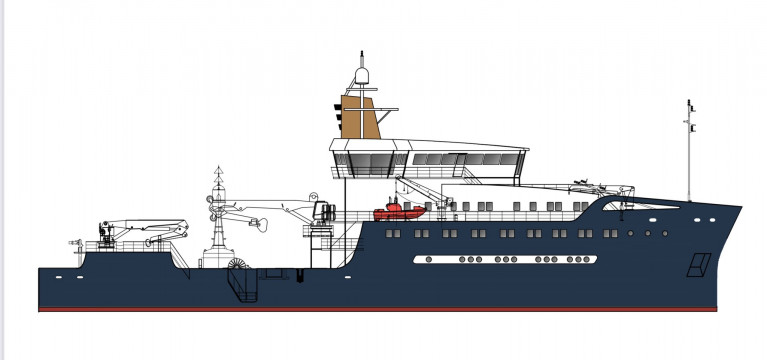Displaying items by tag: Scottish & Manx waters
Scotland & Isle of Man: Northern Lighthouse Board to Replace Aids to Navigation Tender NLV Pole Star
The General Lighthouse Authority (GLA) for Scotland and the Isle of Man, the Northern Lighthouse Board (NLB) has embarked on a project to replace the NLV Pole Star after more than two decades in service.
NLV Pole Star is nearing an end of a career with a newbuild target in-service date of September 2024. This will see the replacement aids to navigation tender meet the ambitious environmental targets set out in the UK Government Clean Maritime Plan, whilst future-proofing NLB’s ability to deliver its vital safety services over the next 25 years.
The new vessel will incorporate contemporary green hybrid energy systems and will be designed to be upgradeable through-life to accommodate emerging power technologies. The vessel will also provide improved sea keeping and heavy weather performance over its predecessor and therefore be able to deliver more effective response to wrecks and new navigational dangers as well as routine operational tasking.
A concept design has been developed in collaboration with OSK-ShipTech of Copenhagen who assisted the project team, which includes ship and shore staff, NLB Commissioners and Caledonian Maritime Assets Ltd (CMAL). This concept design and detailed specification is being used to inform both the business case and procurement exercise.
Mike Bullock, NLB’s Chief Executive said: “This is a very exciting project and we are delighted to have recently received Ministerial and Cabinet Office approval of the Outline Business Case (OBC). This means we can now progress to the procurement phase for the design and build of the new vessel.
“The new vessel will be a step change from what has gone before bringing innovation and new technology to minimise the impact on the environment and ensure that we can continue to protect mariners operating in Scottish and Manx waters. The vessel will also follow a tradition which started in 1892 by being the fifth NLB vessel to bear the name Pole Star.”
The procurement exercise began on 19 May 2021 with the publication of the initial call for interested shipyard builders to respond to a Selection Questionnaire. Subsequently, short listed yards will enter into a detailed tendering exercise which will lead to contract award in mid-2022.
In April, information from NLB’s Industry Engagement events was held and can be found on the NLB website and via the following Industry Event portal here.
This opportunity has been published on Delta eSourcing which is a tool for buyers and suppliers for managing tenders. Interested tenderers must register on the Delta Platform to access key documents and to take part in this procurement activity, click this link.
























































